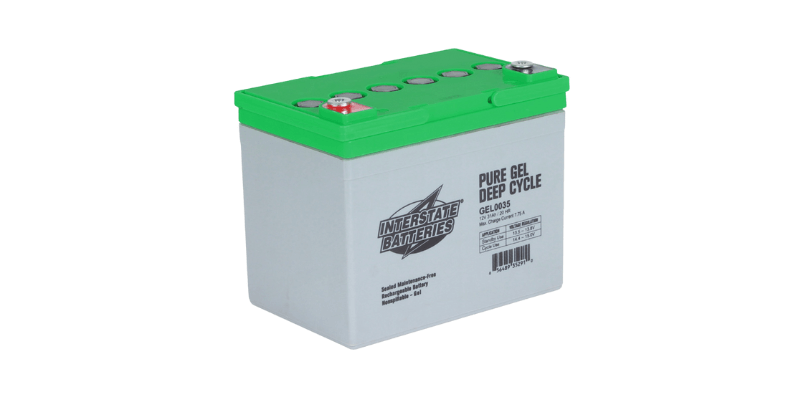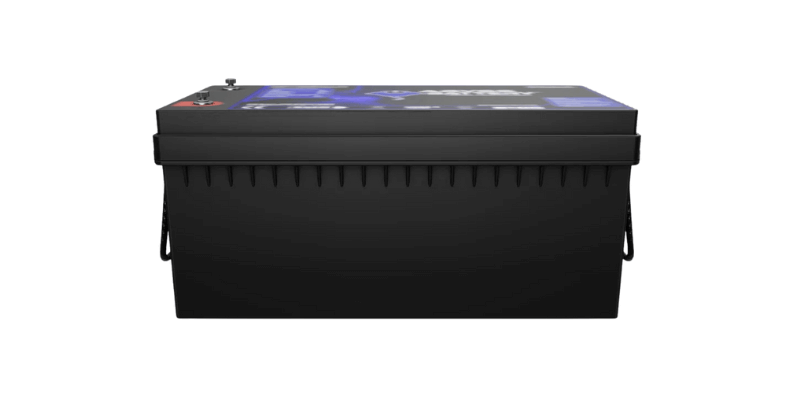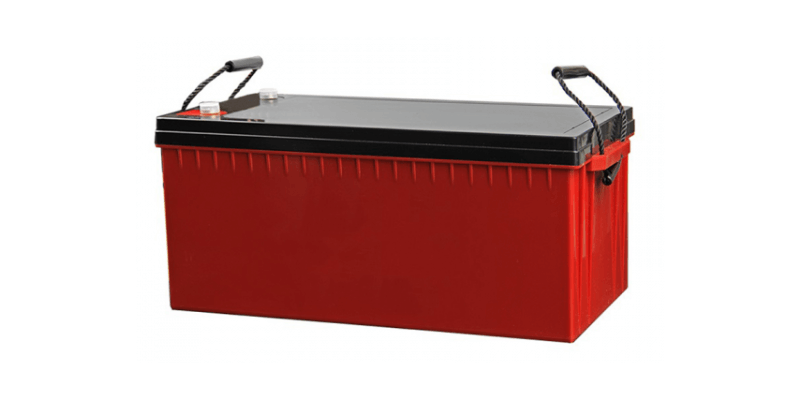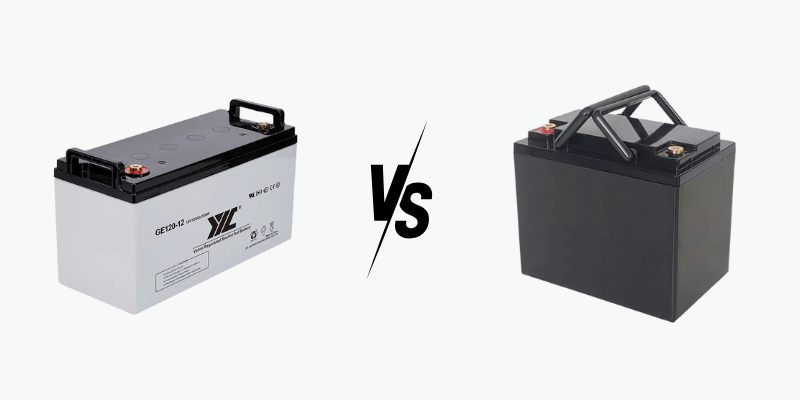Escolhendo entre uma bateria de gel e um Bateria de lítio pode ser complicado. Neste artigo, exploraremos suas composições, vantagens e desvantagens. No final, você saberá qual se combina melhor de situações diferentes. Vamos começar!
O que é uma bateria de gel?
Uma bateria de gel é uma Bateria de chumbo-ácido que usa um eletrólito gelificado, uma mistura de ácido sulfúrico e fumaça de sílica, para imobilizar o eletrólito. Esse design cria uma fonte de energia à prova de derramamentos e sem manutenção, ideal para a resistência de ciclismo e vibração profunda.
Ao contrário das baterias tradicionais de ácido de chumbo inundadas, as baterias de gel não precisam de cobertura de água ou exames frequentes, tornando-os excelentes para equipamentos sensíveis, como dispositivos médicos, cadeiras de rodas e configurações solares fora da grade.
Aqui estão os principais recursos:
- Capacidade de ciclo profundo: você pode usar até 80% de sua capacidade sem se preocupar com danos.
- Resiliência à temperatura: funciona bem, mesmo em condições quentes ou frias extremas.
- Baixa autodescrição: mantém sua carga de maneira eficaz, perdendo apenas cerca de 1 a 2% ao mês quando armazenado.

O que é uma bateria de lítio?
As baterias de lítio geram eletricidade movendo íons de lítio entre o ânodo e cátodo. Eles são altamente populares em eletrônicos e carros elétricos portáteis porque são leves e carregam muita energia.
Existem dois tipos principais a saber:
1. Fosfato de ferro de lítio (LFP): Conhecido por segurança, vida duradoura com 3.000 a 6.000 ciclos e excelente estabilidade térmica.
2. Ternário/NCM: oferece maior densidade de energia, mas com segurança moderada.
As vantagens? Charagem rápida, a capacidade de descarregar completamente (100% DOD) e uma vida útil de até 10 anos!

Bateria de gel vs. Bateria de lítio: diferenças de chave ao relance
| Característica | Bateria de gel | Bateria de lítio |
| Densidade de Energia | Baixo (50–60 wh/kg) | High (120–260 wh/kg) |
| Ciclo de vida | 500-1.500 ciclos | Até 6.000 ciclos |
| Tempo de carregamento | Lento (mais de 8 horas) | Rápido (1 a 3 horas) |
| Sensibilidade à temperatura | Moderado (-20 ° C a 50 ° C) | Alto (>40 ° C, risco de LFP) |
| Peso | Pesado (por exemplo, 60 kg para 100AH) | Luz (por exemplo, 15 kg para 100AH) |
| Custo inicial | 100-200 por kWh | 400-800 por kWh |
| Segurança | Não inflamável; risco térmico mínimo | Risco térmico em fuga se danificado |
Considerações para a escolha entre as baterias de gel e lítio
Ao decidir entre as baterias de gel e lítio, considere o seguinte:
1. Orçamento: As baterias de gel são mais baratas, cerca de 50 a 70% menos, mas podem precisar ser substituídas mais cedo.
2. Demandas de aplicativos:
- Para uso diário alto, como em veículos elétricos ou configurações solares, a vida útil mais longa da bateria de lítio justifica o custo.
- Para casos de backup ou de baixo uso, como luzes de emergência, a baixa autodescança da bateria de gel é suficiente.
3. Condições ambientais: Baterias de gel manuseio temperaturas extremas Melhor, enquanto as baterias de lítio exigem algum gerenciamento térmico.
4. Manutenção: Ambos os tipos requerem pouca manutenção. No entanto, a bateria de lítio inclui um sistema de gerenciamento de bateria embutido (BMS) para operação suave.
Use recomendações de caso:
- Sistemas de energia solar: a bateria de lítio é excelente para ciclismo diário devido à sua maior profundidade de descarga (DOD), carregamento mais rápido e vida útil mais longa. Se você estiver com um orçamento limitado ou precisar apenas de energia de backup, a bateria de gel é uma boa opção.
- Aplicações marítimas/RV: A bateria de lítio é ideal para economizar peso e manusear ciclismo profundo. A bateria de gel funciona bem em ambientes de baixa vibração com restrições orçamentárias.
- Equipamento médico: em ambientes estáveis onde a segurança é crucial, a bateria de gel se destaca.

Perguntas frequentes: bateria de gel vs bateria de lítio
O que é melhor, a bateria de lítio ou gel?
Depende de suas prioridades. A bateria de lítio se destaca no desempenho, enquanto a bateria do gel é melhor para usos sensíveis ao custo e com baixo teor de ciclismo.
Uma bateria de gel é boa para solar?
Sim, mas com limitações: as baterias de gel são confiáveis para os sistemas solares de backup devido à baixa autodescança (1 a 2% ao mês) e à tolerância parcial de carregamento. Eles são resistentes a vibrações, adequados para configurações fora da rede. No entanto, eles cobram lentamente (mais de 8 horas) e têm menor eficiência (80-85%) em comparação com as baterias de lítio (95-99%).
Posso substituir uma bateria de gel por uma bateria de lítio?
Sim, mas garanta:
- Compatibilidade de tensão (o lítio geralmente usa 12V/24V/48V).
- O carregador/controlador suporta perfis de lítio (por exemplo, tensão de corrente constante).
- O espaço físico acomoda tamanho menor.
As baterias de lítio são mais seguras do que as baterias de gel?
As baterias de gel são mais seguras porque usam eletrólitos não inflamáveis. Embora as baterias de lítio, especialmente a LFP, sejam estáveis, elas podem experimentar fuga térmica se perfuradas ou sobrecarregadas. Um BMS ajuda a mitigar esse risco.
Conclusão: Qual bateria é adequada para você?
Escolha baterias em gel, se você estiver com um orçamento limitado, precisar de energia de backup confiável sem ciclismo frequente e priorize a segurança em condições difíceis.
Por outro lado, opte por baterias de lítio se você estiver focado em economias de longo prazo (elas custam menos por ciclo), valor e espaço ou requer ciclismo profundo diário, como em painéis solares ou EVs.
Além disso, se o carregamento rápido e a alta eficiência forem essenciais, a bateria de lítio é a melhor escolha.

